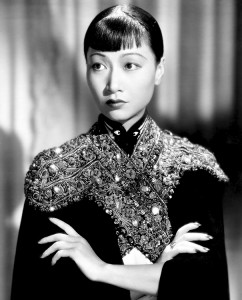Women’s History Month: Actress Anna May Wong
March is Women’s History Month, an annual observance of women’s achievements and contributions to society. This month, Behind the Headlines will feature woman pioneers in a variety of areas.
Her face has gone from the big screen to quarters! Anna May Wong was an Asian American actress. She became famous during the early years of American cinema. In her time, she was one of the few Asian performers to achieve widespread success. Wong eventually grew disappointed with the limited roles offered to her. She also became an outspoken critic of the casting of white performers in Asian roles. The U.S. Mint announced in 2021 that Wong would be one of five women commemorated on the quarter in their American Women Quarters series.
Wong Liu Tsong was born Jan. 3, 1905, in Los Angeles, California. Her parents operated a laundry. She made her first motion-picture appearance as an extra in The Red Lantern (1919). Wong continued acting in small roles. For years, she hid her work as an extra from her family. Her first credited role was in Bits of Life (1921). When her father learned of her acting career, he insisted on being present when she was on set.
Wong starred in the 1923 film Toll of the Sea, the first widely released feature film made in Technicolor. Before Technicolor, films were either shown in black and white or colored by hand. In Toll of the Sea, Wong played the romantic lead, bringing her new fame. However, her stardom started to strain her family life, with photographers and fans showing up at the family laundry to see her. Her family was further upset with her role in The Thief of Bagdad (1924) as an untrustworthy “Mongol slave.”
By the late 1920’s, Wong had grown disappointed in Hollywood. She was consistently offered roles as villains, slaves, or temptresses. In contrast, sympathetic leading roles were often reserved for white performers. Even Asian lead roles were often performed by better-known white actors made up to look Asian. In The Crimson City (1928), for example, Wong played a supporting role to lead actress Myrna Loy, a white woman made to look Asian. Wong moved to Europe in hopes of finding more realistic roles. There, she learned to speak French, German, and Italian. In 1929, Wong starred alongside the British actor Laurence Olivier in the play A Circle of Chalk in London.
In 1931, Wong starred as the lead in the Broadway play On the Spot. The role led to a return to Hollywood, with Daughter of the Dragon (1931) and Shanghai Express (1932). Both films offered the type of Asian villainess roles Wong had sought to escape. Yet Shanghai Express allowed for a more nuanced portrayal. Wong played Hui Fei, a prostitute (sex worker) and ally of a Chinese warlord who later turns on him, killing him.
Despite the acclaim she received for Shanghai Express, Wong continued to be offered disappointing roles. Producers had wanted Wong to play Lotus, a dancer, in the film adaptation of the novel The Good Earth. Wong wanted to play O-Lan, the female lead. The German actress Luise Rainer went on to win an Academy Award for portraying O-Lan.
In 1936, Wong again left Hollywood, this time for China. In China, Wong was criticized for her early film roles and for being too western for Chinese audiences. When she returned to America, filmmakers were more interested in hiring her to coach white actors performing Asian roles. In 1942, she retired from acting in films.
During the 1950’s, Wong acted in television shows, including her own series in 1951. In “The Gallery of Mme. Liu Tsong,” Wong portrayed a gallery owner who solved crimes. In 1960, she attempted a return to film, portraying a housekeeper in Portrait in Black. Wong died Feb. 3, 1961, from a heart attack. The Chinese American actress Michelle Krusiec played Wong in the television miniseries Hollywood (2020).




